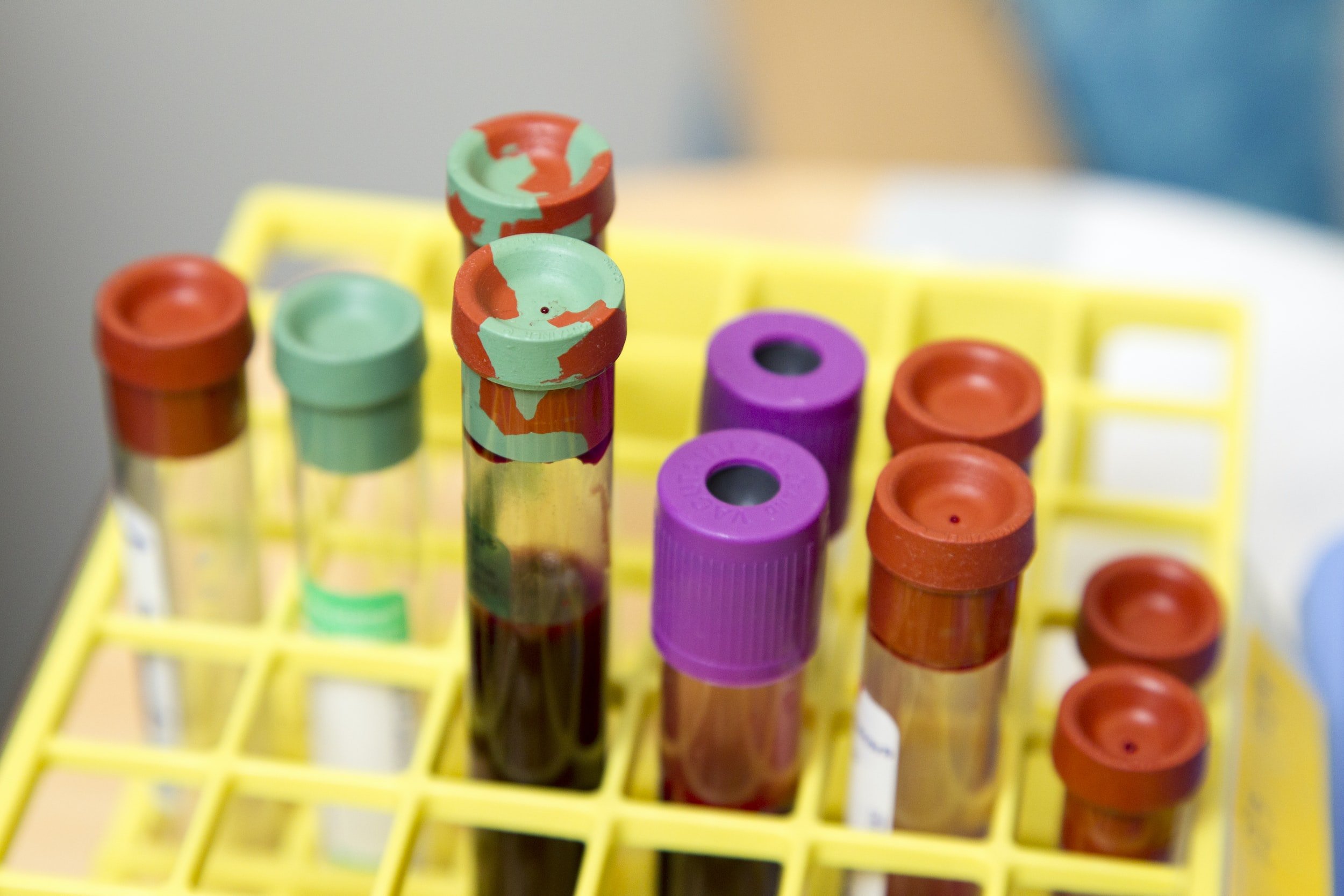
Beyond your LDL.
Biomarkers
Biomarkers, often called “labs,” are measurable substances in your blood or bodily fluids that indicate your physiologic state or condition. Traditionally, doctors use lab tests to diagnose diseases such as diabetes after they already exist.
We think they can do more to promote health.
The labs we use in our panels are strongly associated with physical fitness levels. You can track them as you would other gains. These markers also predict metabolic syndrome (type 2 diabetes, hypertension, etc.) and cardiovascular disease (heart attack, stroke) well before a “disease” occurs.
Learn more about individual tests & panels below.

Lipids
-
The “good” type of cholesterol helps clear away plaque from blood vessel walls. There are some strong genetic influences of HDL in some people but a higher level is ideal.
Included in all panels.
-
A binding protein found on “bad” cholesterol types that promotes plaque formation in blood vessel walls (atherosclerosis).
Included in all panels.
-
Apo A-1 is the main protein content of HDL. Decreased levels correlate with increased risk of coronary artery disease (CAD), and is a better measure of “good cholesterol” than HDL alone.
Included in Expanded & Advanced Panels.
-
Lipoprotein (a), or Lp(a), is a molecule that is associated with an increased risk of cardiovascular disease. This marker is strongly genetic and cannot be improved much through lifestyle changes.
Included in Expanded & Advanced Panels.
-
This NMR LipoProfile measures the number and full spectrum of lipid particle by size. The smallest LDLs are most associated with plaque formation so reported as the most important metric.
Included in Advanced Panel.
Inflammation
-
High Sensitivity C-Reactive Protein (hs-CRP) is an inflammatory marker that signifies increased cardiovascular risk. Very high levels (> 10) can also be seen with numerous problems (e.g. infection).
Included in all panels.
-
Fibrinogen is elevated with various type of inflammation. Persistently elevated levels are associated with an increased risk of atherosclerosis.
Included in Expanded & Advanced Panels. -
Homocysteine can be elevated for a number of reasons, including deficiency in B-vitamins or folate. It is an independent risk factor for the development of cardiovascular disease.
Included in Expanded & Advanced Panels.
-
Oxidized low density lipoproteins (oxidized LDL) is now considered to be a key event in the biological process that initiates and accelerates the development of the early atherosclerotic lesion, the fatty streak.
Included in Advanced Panel.
Metabolic
-
Aka. “blood sugar”, glucose is the primary source of energy for your body. Elevated levels can signify diabetes or risk of diabetes in the future.
Included in all panels. -
A high level of fasting insulin is an indicator of insulin resistance; occurring well before a rise in blood sugars (type 2 diabetes). Lower levels are associated with less risk of cardiovascular disease.
Included in all panels.
-
An estimation of average blood sugar over the past 120 days. A diagnosis of diabetes is made at 6.5, but higher than 5.6 is a risk for developing diabetes - often called “pre-diabetes”.
Included in all panels.
-
The fat particles that transport cholesterol. High levels often coincide with obesity and insulin resistance, especially when combined with low HDL.
Included in all panels.
-
Alanine Aminotransferase (ALT) is liver enzyme. Higher levels are associated with injury or inflammation; most commonly “fatty liver disease”, often found with metabolic syndrome.
Included in all panels.
-
High uric acid is associated with a number of chronic disease states, including cardiometabolic diseases. High levels are associated with gouty arthritis but are not sufficient to make a diagnosis.
Included in all panels.
-
After ingesting carbohydrates (75g of glucose here) will naturally rise for 30-60 minutes, before lowering. Elevated glucose levels at 2 hours suggests metabolic syndrome or frank diabetes.
Included in Expanded & Advanced Panels.
-
A high level of fasting insulin is an indicator of insulin resistance; occurring well before a rise in blood sugars (type 2 diabetes). Lower levels are associated with less risk of cardiovascular disease.
Included in Expanded & Advanced Panels.
-
Small amounts of lactate are produced as a metabolic byproduct of glucose metabolism. Poor mitochondrial function will raise levels & is a sign of metabolic inflexibility. High levels at rest are strongly associated with metabolic syndrome.
Included in Expanded & Advanced Panels.
-
Glycated Albumin evaluates the intermediate-term (preceding 2-3 weeks) glycemic control. This measurement is not affected by hemoglobin abnormalities and may be more accurate than A1c in some people.
Included in Advanced Panel.
-
We provide a 2-week continuous glucose monitor (CGM) to monitor blood sugars in realtime via a smartphone app. This allows you to see how food, activity, and more affect your metabolic health.
Included in Advanced Panel.
Indidividual Lab Tests
Panels
-

Basic Panel
Lipids: HDL, Apolipoprotein B
Inflammation: hs-CRP
Metabolic: Glucose (fasting), Insulin (fasting), Hemoglobin A1c, Uric Acid, ALT
Blood: Hemoglobin
-

Expanded Panel
Basic Biomarker panel, plus…
Lipids: Apolipoprotein (A), Lp (a)
Inflammation: Fibrinogen, Homocyst(e)ine
Metabolic: Insulin & Glucose (2-hour oral glucose tolerance), Lactate
-

Advanced Panel
Basic & Expanded Biomarker panels, plus…
Lipids: NMR LipoProfile (Particle Size)
Inflammation: oxLDL
Metabolic: Glycated Albumin, Continuous Glucose Monitor (2 weeks)


